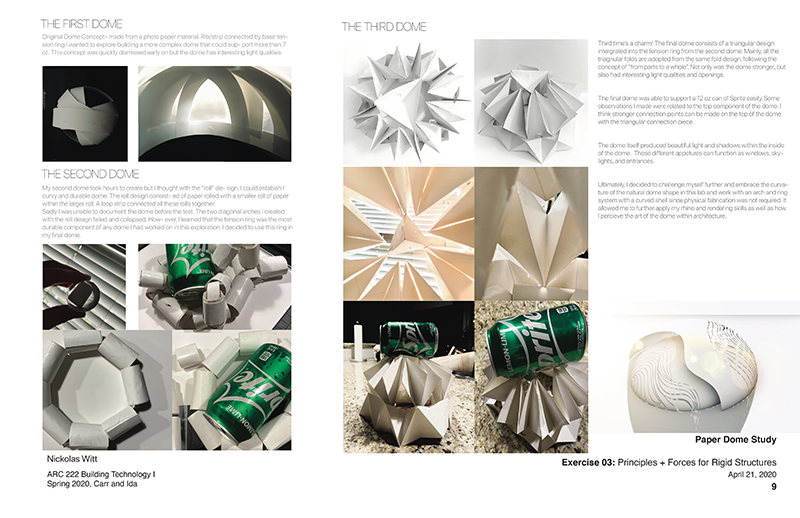Virtual Teaching in the Technologies
Webinar Conversations
TESTING and EXPERIMENTATION
Tuesday, July 21st: 4pm -5:30pm EDT
Whether testing in your course means concepts, exams, material testing, physical experimentation, or social experiments, you likely have to reframe your and your students’ approach for virtual modality. When assessing knowledge, remote and unproctored situations require a change in focus on what to test. Material studies and physical experiments are no longer a collective effort that can be undertaken with others, but instead they require new ways of thinking about how to gain this knowledge first-hand. In this topic, we welcome BTES members to share ideas for how to maintain the integrity of testing and experimentation, while also exemplifying the learning involved in this educational activity. Click the presentation titles to access individual pre-recorded videos.

Application of XR | Amber Bartosh 
DIY Rigid Surface Structures (Nick Witt, student) | Aletheia Ida and Laura Carr
Alternative Pedagogical Strategies for Technology Courses Due to COVID-19
David Ogoli, California Baptist University
COVID-19 challenged the processes, procedures and pedagogical strategies in spring 2020. This presentation discusses reflection of lessons learnt from this alternative virtual pedagogical strategy for Environmental technology classes in studio-based experiments that involved building information modeling (BIM) with computational fluid dynamics (CFD) and mechanical, electrical, and plumbing (MEP) systems.
Hands-On, On-Line: A Cedar Design-Build Studio in Digital Space
Tyler Sprague, University of Washington
This presentation will describe the methods, projects and outcomes of the 2020 online offering of the Barry Onouye Studio at the University of Washington. Initially intended to be a design-build studio, the instructors shifted to embrace digital collaboration tools and distance learning techniques to foster hands-on learning and a collective design project.
Application of XR in Building Technology Education
Amber Bartosh, Syracuse University
The proposed presentation will illustrate how XR technologies were implemented to communicate simulated built environment data and design material both before COVID-19, when access to XR equipment was available through the university, and after, when teaching and research pivoted to using readily obtainable open source/free software and mobile platforms (smart phones or tablets) to create interactive and immersive XR environments using WebXR.
Invited Guest Presenters
DIY Modeling and Analysis: Physical and Digital Rigid Surface Structures
Aletheia Ida, University of Arizona
Laura Carr, University of Arizona
Early student learning objectives are demonstrated through the process and results of a rigid surface structure exercise that was conducted in a second-year Bachelor of Architecture Integrated Technology course immediately following the spring break stay-at-home order. When shifting to a remote learning setting, without collective access to physical labs and digital computing resources, we quickly adapted our class to a DIY mentality. Inherently, while working ‘alone’ from home, students were capable of finding agency and confidence in their abilities for creating, making, and analyzing both physical and digital constructs. We speculate on the future benefits of these strategies to instill intuitive design-thinking principles for reciprocal relationships between structural, material, and environmental aspects.
Vignette Exams in Remote Teaching
Carmen Trudell, Cal Poly, San Luis Obispo
Originally design for in-person teaching, paper-based vignette exams proved effective in remote teaching situations as well. These vignette exams prioritize agile use of digital resources and analog drawing techniques over memorization and computer-grading to better simulate the practice of architecture.
